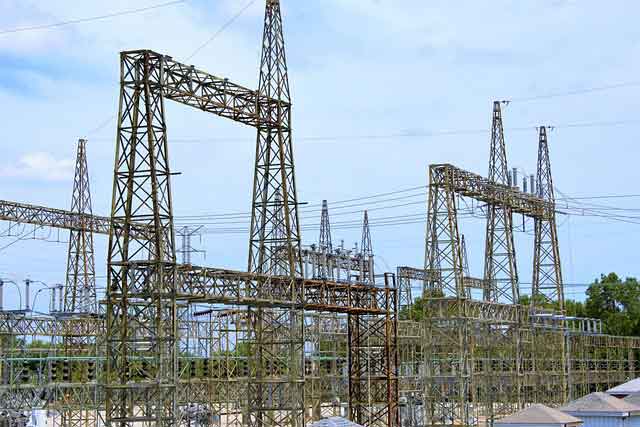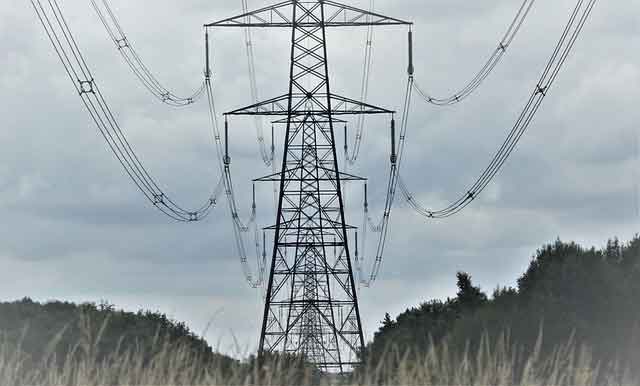Solar power eliminates utility bills in U.S. home
By Reuters
Protective Relay Training - Basic
Our customized live online or in‑person group training can be delivered to your staff at your location.

- Live Online
- 12 hours Instructor-led
- Group Training Available
His conventional-looking family home in the pinewoods of western New Jersey is the first in the United States to show that a combination of solar and hydrogen power can generate all the electricity needed for a home.
The Hopewell Project, named for a nearby town, comes at a time of increasing concern over U.S. energy security and worries over the effects of burning fossil fuels on the climate.
"People understand that climate change is a big concern but they don't know what they can do about it," said Gian-Paolo Caminiti of Renewable Energy International, the commercial arm of the project. "There's a psychological dividend in doing the right thing," he said.
Strizki runs the 3,000-square-foot house with electricity generated by a 1,000-square-foot roof full of photovoltaic cells on a nearby building, an electrolyzer that uses the solar power to generate hydrogen from water, and a number of hydrogen tanks that store the gas until it is needed by the fuel cell.
In the summer, the solar panels generate 60 percent more electricity than the super-insulated house needs. The excess is stored in the form of hydrogen which is used in the winter - when the solar panels can't meet all the domestic demand - to make electricity in the fuel cell. Strizki also uses the hydrogen to power his fuel-cell driven car, which, like the domestic power plant, is pollution-free.
Solar power currently contributes only 0.1 percent of U.S. energy needs but the number of photovoltaic installations grew by 20 percent in 2006, and the cost of making solar panels is dropping by about 7 percent annually, according to the Solar Energy Industries Association.
As costs decline and the search accelerates for clean alternatives to expensive and dirty fossil fuels, some analysts predict solar is poised for a significant expansion in the next five to 10 years.
The New Jersey project, which opened in October 2006 after four years of planning and building, cost around $500,000, some $225,000 of which was provided by the New Jersey Board of Public Utilities. The state, a leading supporter of renewable energy, aims to have 20 percent of its energy coming from renewables by 2020, and currently has the largest number of solar-power installations of any U.S. state except California.
New Jersey's utility regulator supported the project because it helps achieve the state's renewable-energy goals, said Doyal Siddell a spokesman for the agency.
"The solar-hydrogen residence project provides a tremendous opportunity to reduce greenhouse gases that contribute to global warming," he said.
The project also got equipment and expertise from a number of commercial sponsors including Exide, which donated some $50,000 worth of batteries, and Swageloc, an Ohio company that provided stainless steel piping costing around $28,000. Strizki kicked in about $100,000 of his own money.
While the cost may deter all but wealthy environmentalists from converting their homes, Strizki and his associates stress the project is designed to be replicated and that the price tag on the prototype is a lot higher than imitators would pay. Now that first-time costs of research and design have been met, the price would be about $100,000, Strizki said.
But that's still too high for the project to be widely replicated, said Marchant Wentworth of the Union of Concerned Scientists, an environmental group in Washington. To be commonly adopted, such installations would have to be able to sell excess power to the grid, generating a revenue stream that could be used to attract capital, he said.
"You need to make the financing within reach of real people," Wentworth said.
Caminiti argues that the cost of the hydrogen/solar setup works out at about $4,000 a year when its $100,000 cost is spread over the anticipated 25-year lifespan of the equipment. That's still a lot higher than the $1,500 a year the average U.S. homeowner spends on energy, according to the federal government. Even if gasoline costs averaging about $1,000 per car annually are included in the energy mix, the renewables option is still more expensive than the grid/gasoline combination.
But for Strizki and his colleagues, the house is about a lot more than the bottom line. It's about energy security at a time when the federal government is seeking to reduce dependence on fossil fuels from the Middle East, and it's about sustaining a lifestyle without emitting greenhouse gases.
For the 51-year-old Strizki, the project is his life's work. "I have dedicated my life to making the planet a better place," he said.











